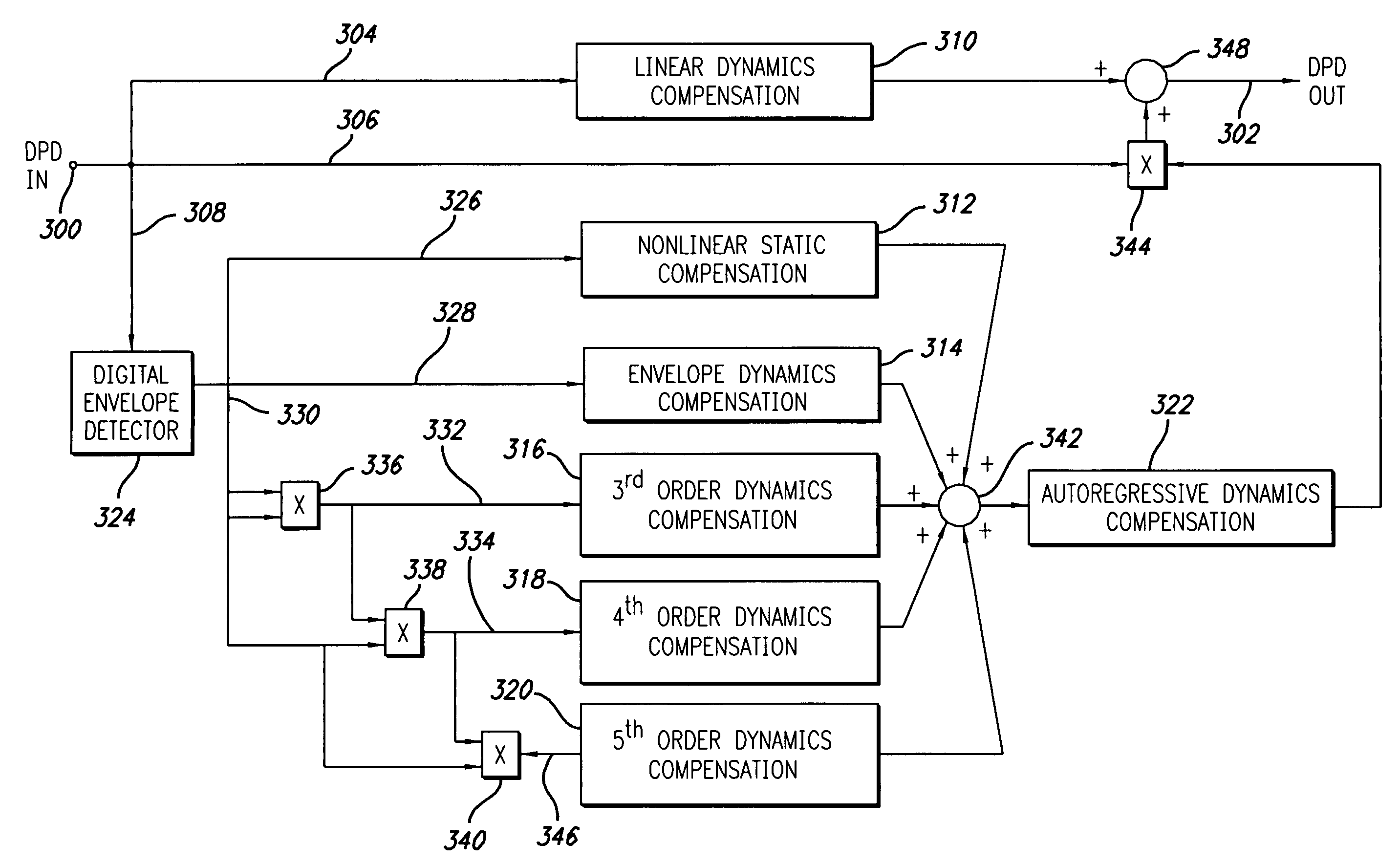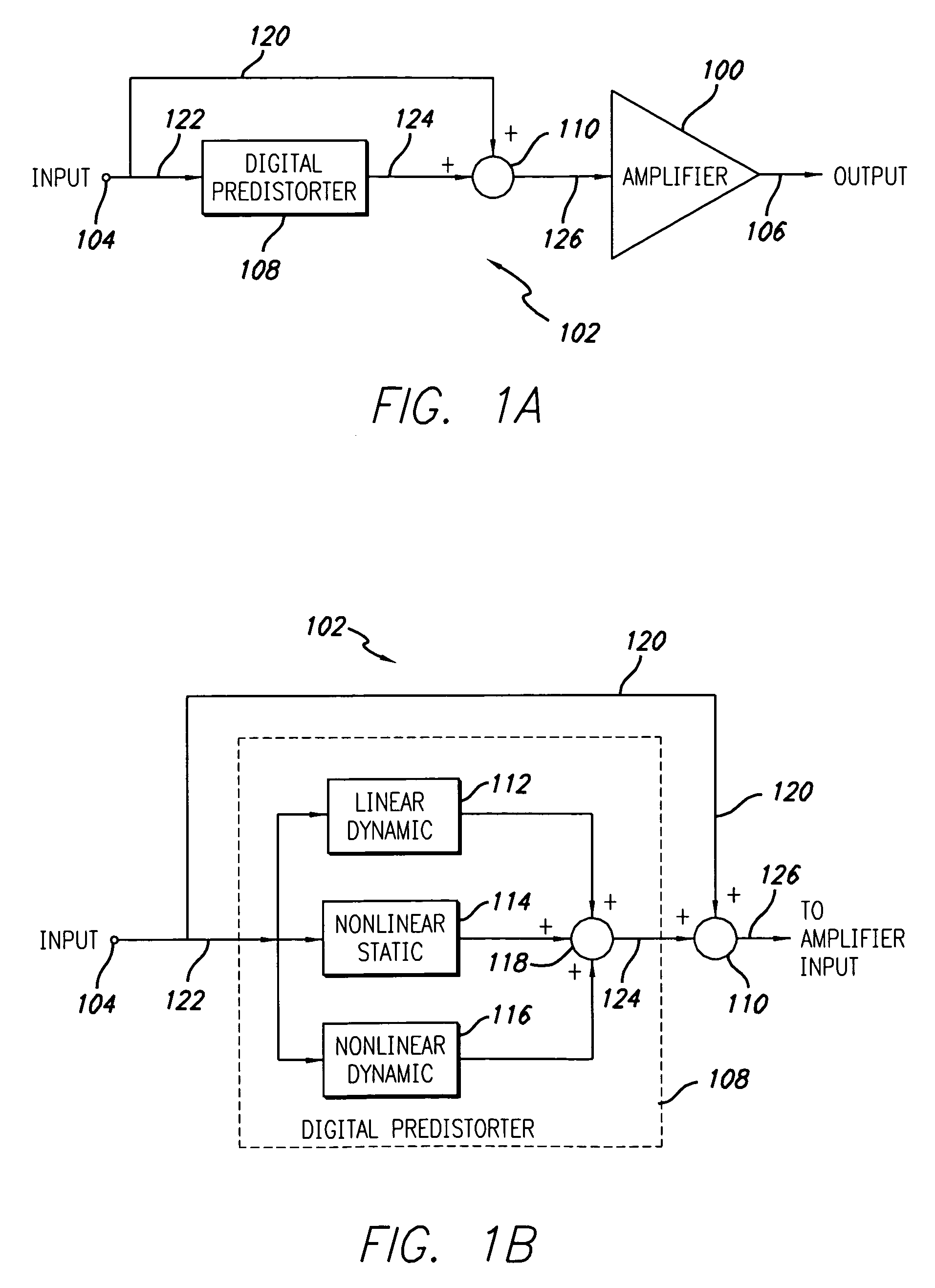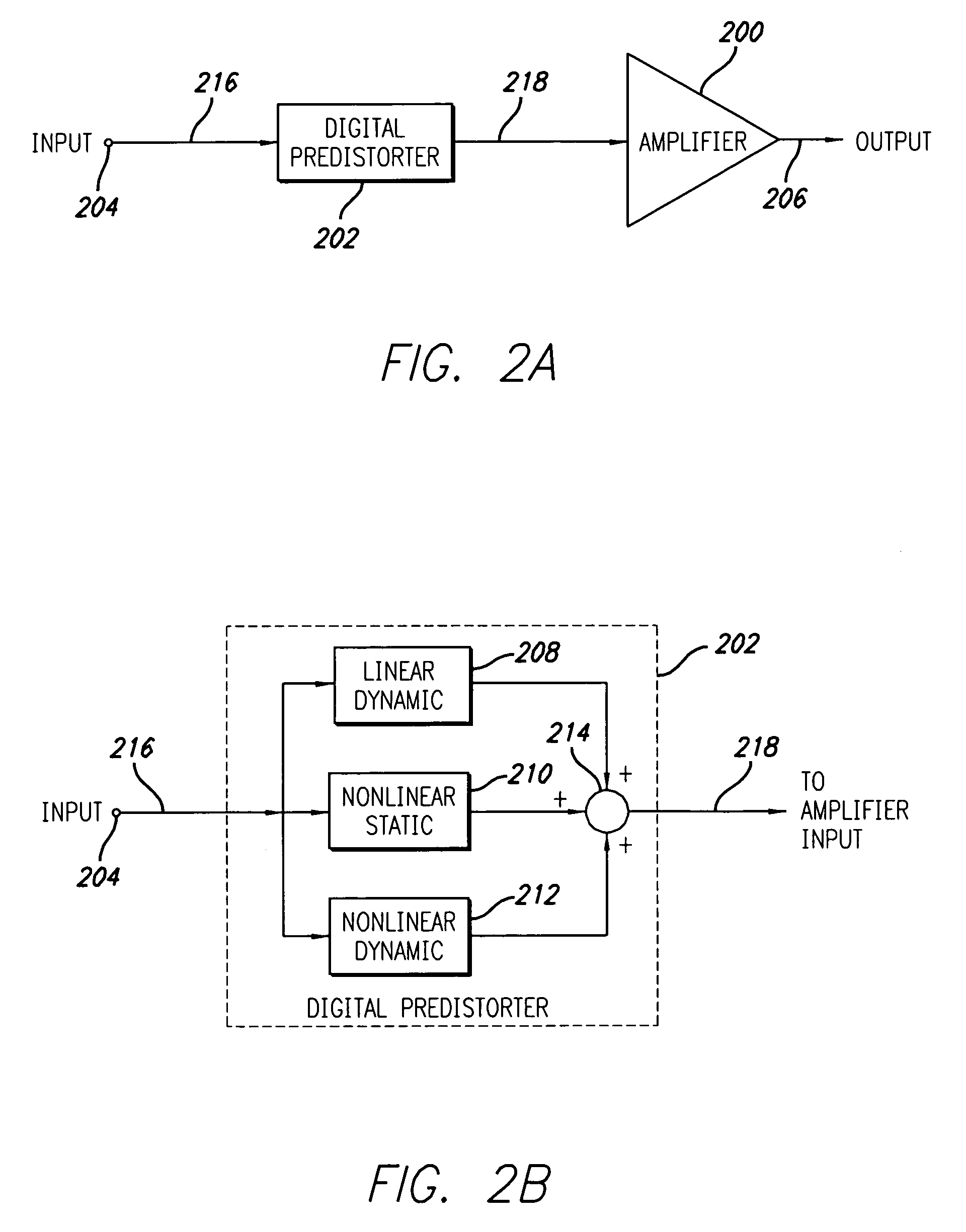Wideband enhanced digital injection predistortion system and method
a wideband enhanced, digital injection technology, applied in the direction of digital transmission, amplifier modification to reduce non-linear distortion, baseband system details, etc., can solve the problems of interference to communications in adjacent channels, modulations generating distortion components at the output of transmitters, and high undesirable interference of adjacent channels
- Summary
- Abstract
- Description
- Claims
- Application Information
AI Technical Summary
Benefits of technology
Problems solved by technology
Method used
Image
Examples
Embodiment Construction
[0033]The present invention provides a digital predistortion system and method with enhanced distortion correction capabilities. The present invention further provides an improved predistortion linearized amplifier system and related method. FIGS. 1A and 1B show an additive predistortion system and predistortion linearized amplifier in accordance with a first embodiment of the present invention in which the distortion compensation signal is added (injected) digitally to the baseband modulation input to form the predistorted signal to drive the amplifier. FIGS. 2A and 2B show a multiplicative predistortion system and predistortion linearized amplifier in accordance with a second embodiment of the present invention in which the digital predistorter acts as a nonlinear operator in cascade with the amplifier.
[0034]Referring first to FIG. 1A, the predistortion linearized amplifier system in accordance with a first embodiment of the present invention includes an amplifier 100 which is pre...
PUM
 Login to View More
Login to View More Abstract
Description
Claims
Application Information
 Login to View More
Login to View More - R&D
- Intellectual Property
- Life Sciences
- Materials
- Tech Scout
- Unparalleled Data Quality
- Higher Quality Content
- 60% Fewer Hallucinations
Browse by: Latest US Patents, China's latest patents, Technical Efficacy Thesaurus, Application Domain, Technology Topic, Popular Technical Reports.
© 2025 PatSnap. All rights reserved.Legal|Privacy policy|Modern Slavery Act Transparency Statement|Sitemap|About US| Contact US: help@patsnap.com



